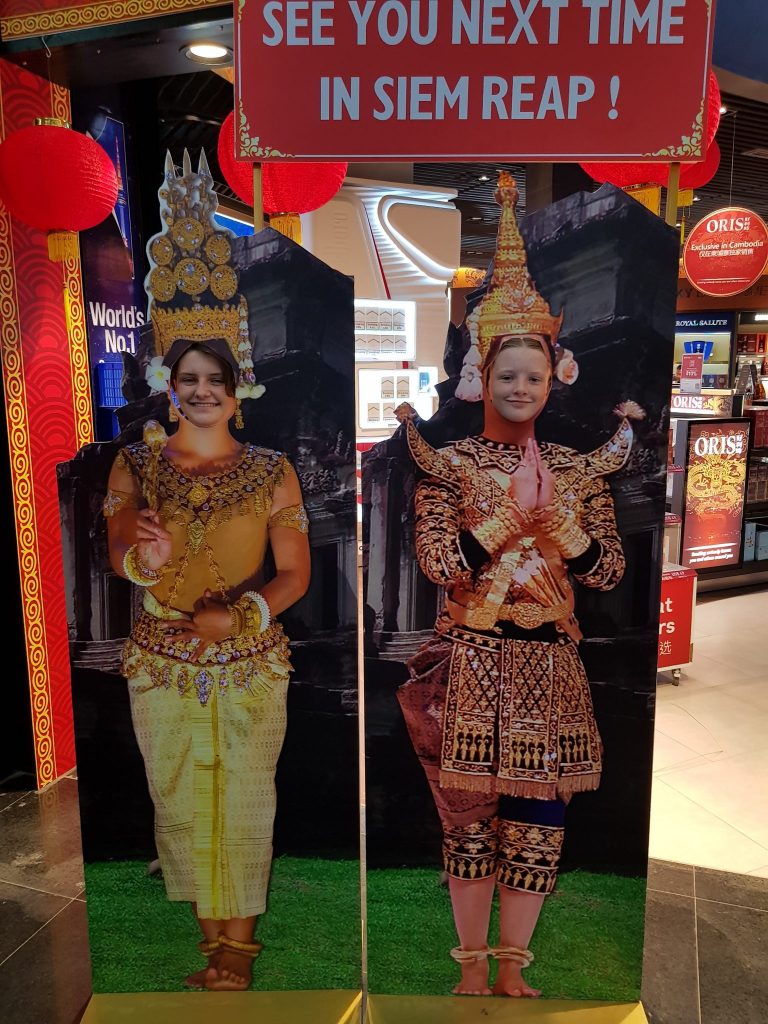After our day exploring Angkor Wat, we were ready for something different. Our driver told us about a few options for excursions, including a nearby village that is entirely on the lake, and a silkworm farm and factory. That sounds cool! Let’s go! So we were picked up at 10 a.m. (which got much better reactions from the girls than the 8 a.m. pickup for Angkor) and headed out to the lake.
Cambodian Countryside
On the way to the lake it was a great window to the typical countryside of Cambodia. Very skinny cows (skinnier than Panama, if that’s possible), many rice and lotus fields, lots of people on motorbikes and lots of little shops. And lots of trash, unfortunately. We also saw a lot of these:

This is a gas station. Not the kind of gas you might want for your car, but for all the scooters running around. Funny how there is a distinction between a higher grade of fuel and the “normal” and they call it “Black Label”. Hope no one from Kentucky mistakes that for something you drink.
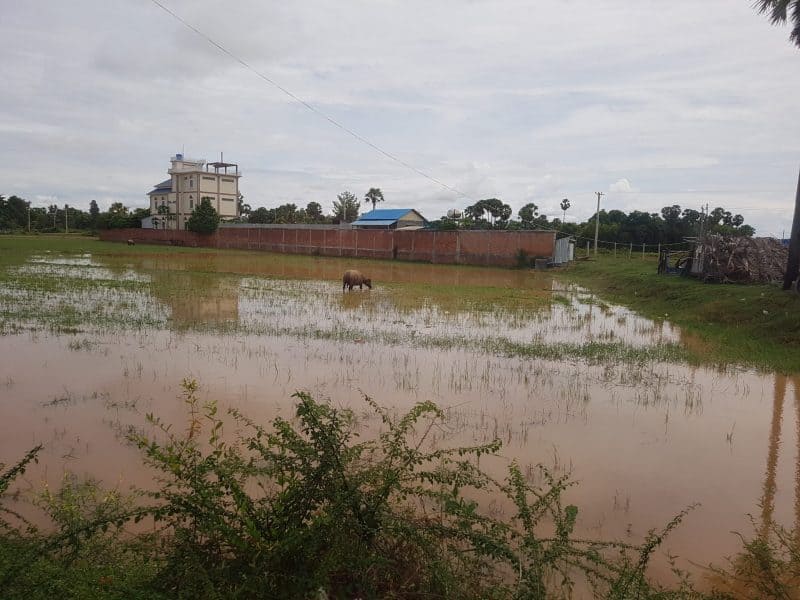
Boats? Or no boats?
After driving for awhile toward the village on the lake, we arrived at some end of the road and were taken to a little booth with a woman with an official-looking notepad and a calculator. She started saying some things in soft, heavily-accented English. We really weren’t sure what was happening other than that we were ready to get on a boat to see the village. But she pointed to us, stabbed at her calculator and showed us the figure of 100. That’s in US Dollars, she says. Say what now? You want to charge us $100 to go on a boat to see a village? None of this had been discussed with us prior to this 45-minute drive, even at the hotel when we discussed the cost of the driver for the day. We were having none of it. So we said, “thanks but no thanks”.
Full disclosure here: we are perfectly happy to pay for excursions. We paid our driver $40 for a full day excursion to see Angkor. We paid $37 each to get into Angkor Wat. We paid $50 for this day to see the village, countryside and silkworm farm. We even paid $120 for all of us to just enter the country of Cambodia. We understand that these things cost money. But our driver just finished telling us that his electricity bill was $75 for the month – which includes having A/C in one room – so $100 seemed incredibly out of range and we felt like they were taking advantage of us. So we took a few photos, looked at the boats from the shore and then got back in the van. Normally this kind of thing gives me hives. It feels incredibly awkward. And I admit that it was awkward. Our happy go lucky driver (who had brought along his daughter for the day) was just standing there smiling. But we moved on quickly and said that we enjoyed the drive but now we were ready to go to the next activity.
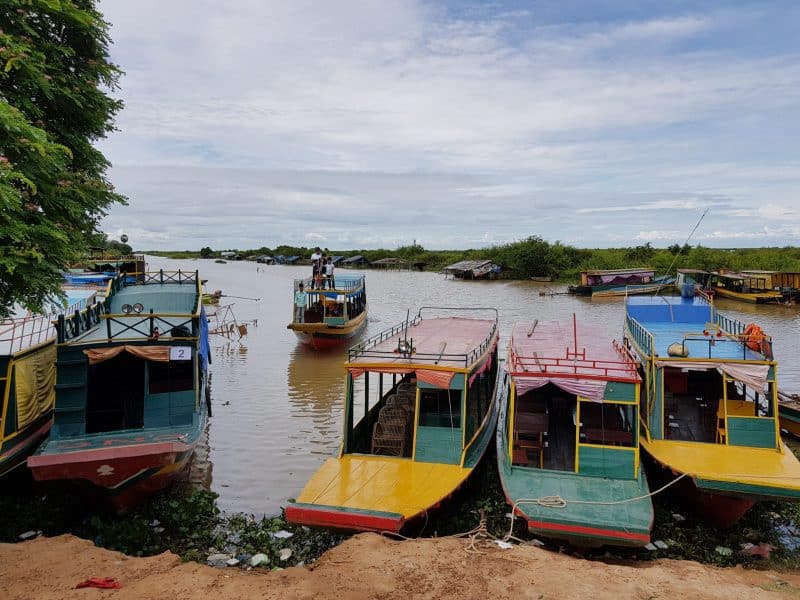
Silk!
Our next stop for the day was at a silkworm farm and silk factory. We were all pretty interested in this. In general, we love tours about things that we will encounter in our daily lives (peanut butter! shoes! cork! rope!) and we confirmed that there was no charge for the tour. And what a tour it was! We were greeted by a guy who spoke excellent English, who invited us to use the (clean, well stocked) bathroom before the tour and then led us through the process. Although she did fine at Angkor, this type of tour is where Zoe really comes alive. We learned so much, and therefore, so will you…
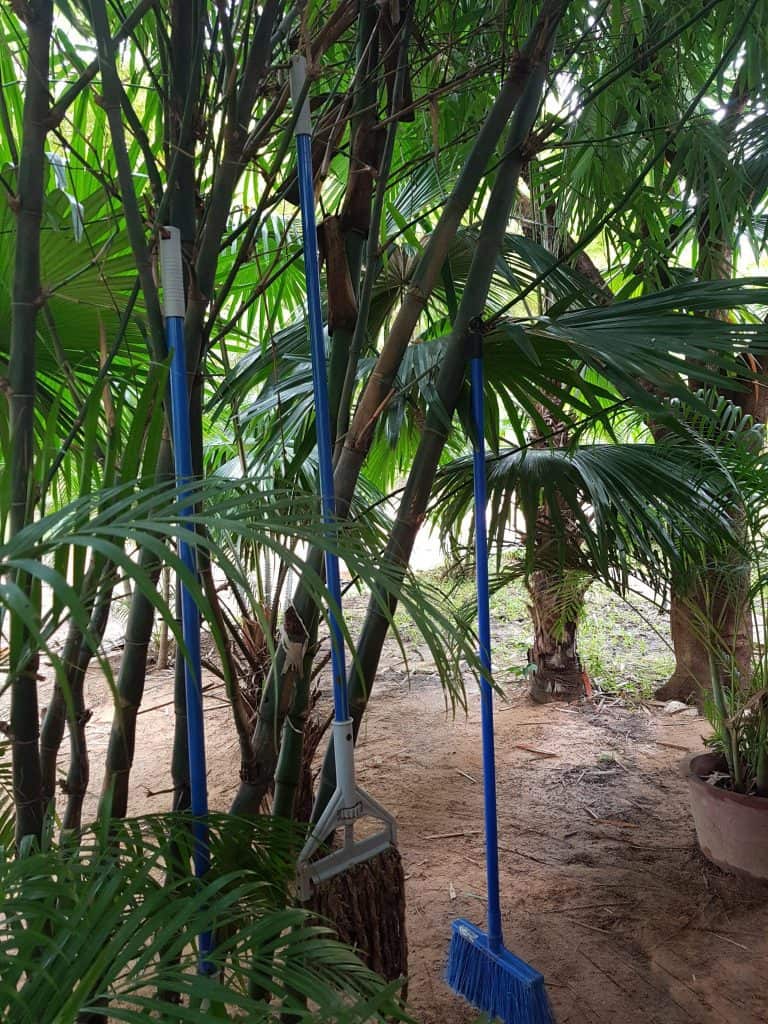
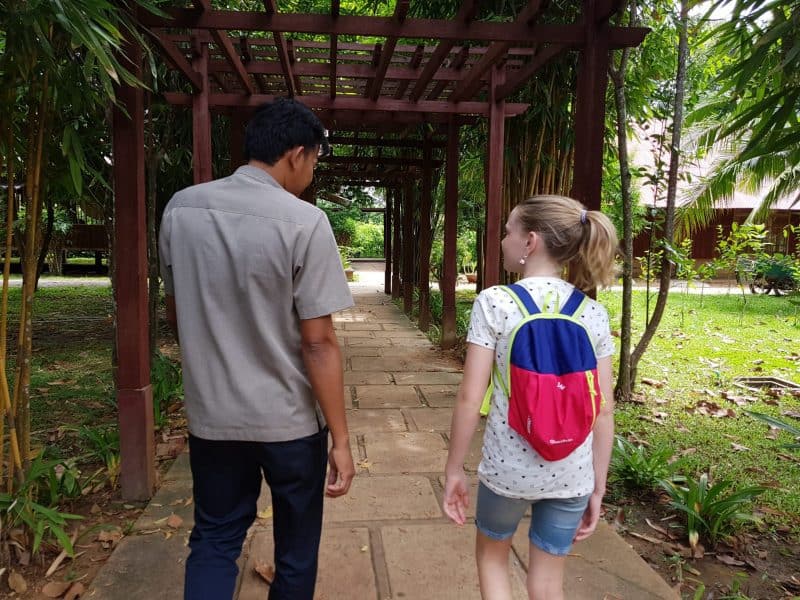
Silkworms are EXACTLY like my family…. they’re fussy eaters. They only eat leaves from mulberry trees (as opposed to my family, who eats almost nothing green and growing outside). Our guide showed us where the trees were growing and described the process for irrigation (it rains enough in the wet season but they have to water the trees every 2-3 days in the dry season) and fertilization (composting, including the silkworm poop). They have to spray pesticide to keep the trees from being damaged by insects. but here’s a fun fact: the silkworms don’t live on these trees anymore. They would be eaten by birds (that would be lots of protein for birdies!) so they house the silkworms in big, screened cabinets. They also protect them from ants and mosquitoes. The silkworms eat the leaves that are fed to them and grow for 24 days.
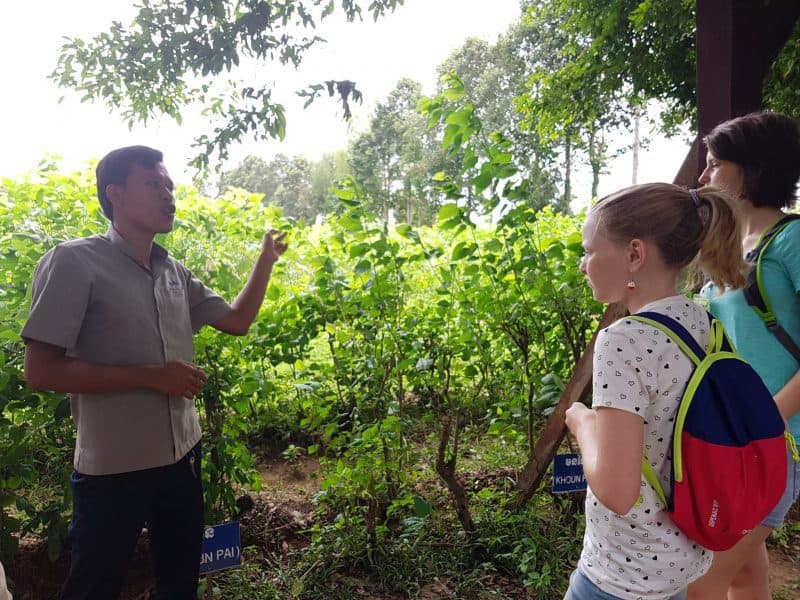
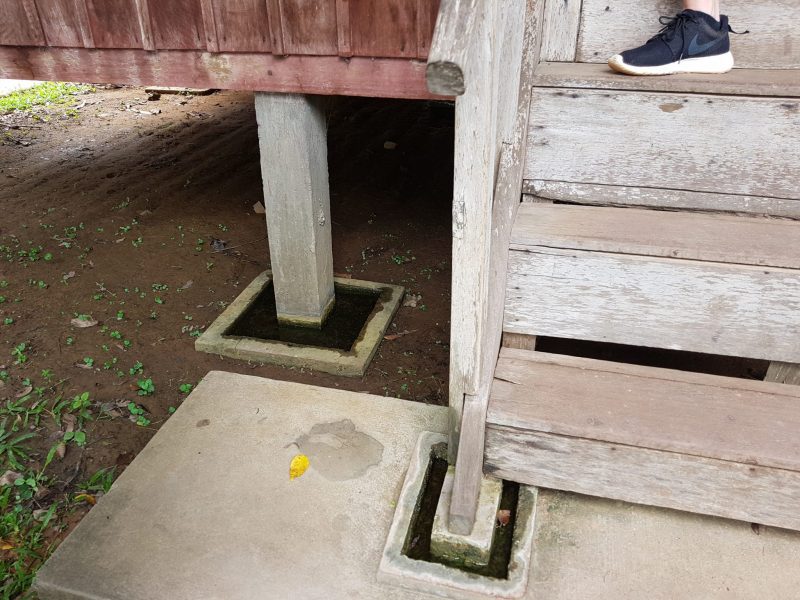

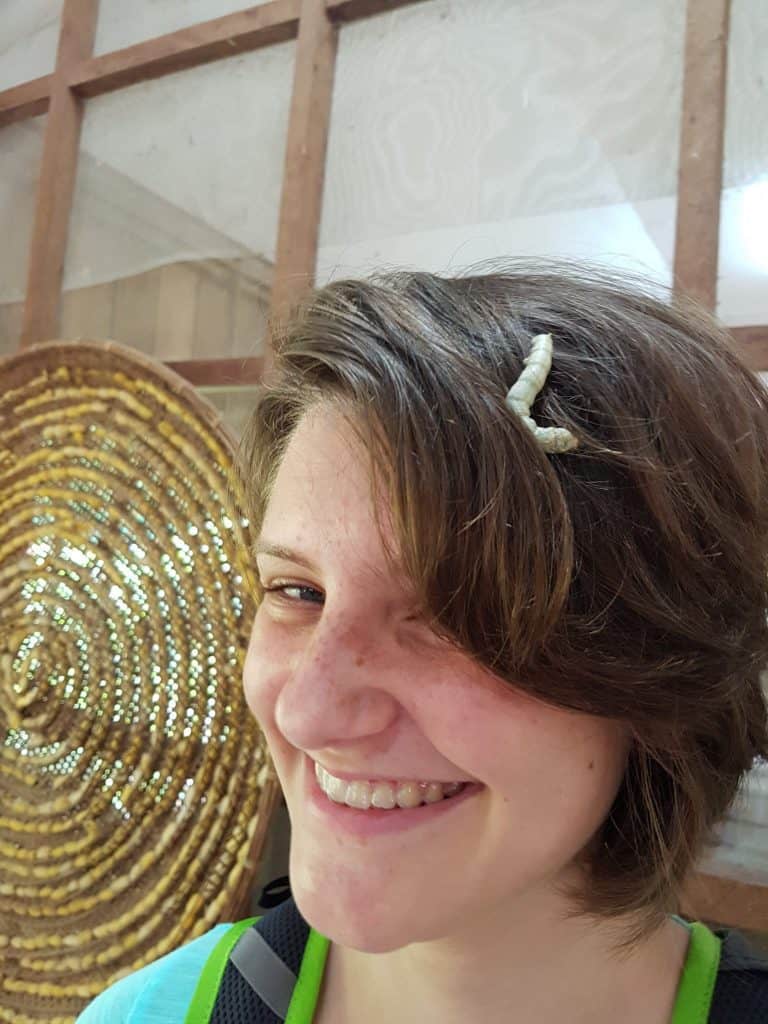
Then they start to cocoon into yellow balls of raw silk. The outer part of the cocoon is called raw silk and the inner threads are considered fine silk. This farm only allows 20% of them to turn into butterflies to produce more silkworms. They only allow 20% because when they exit from their cocoon to blossom into a butterfly, they cut through the silk fiber to get out of the cocoon. In case you didn’t know, that fiber is one continuous thread. So when the butterfly munches through it, the one long thread becomes dozens of smaller threads and are hence useless to the silk workers who spool the tread directly from the cocoons. So the cocoons that have butterflies cannot be used. But the ones they do use are left in the sun for a few days to kill the silkworm inside. That’ll do the trick, as we learned from the day touring Angkor Wat.
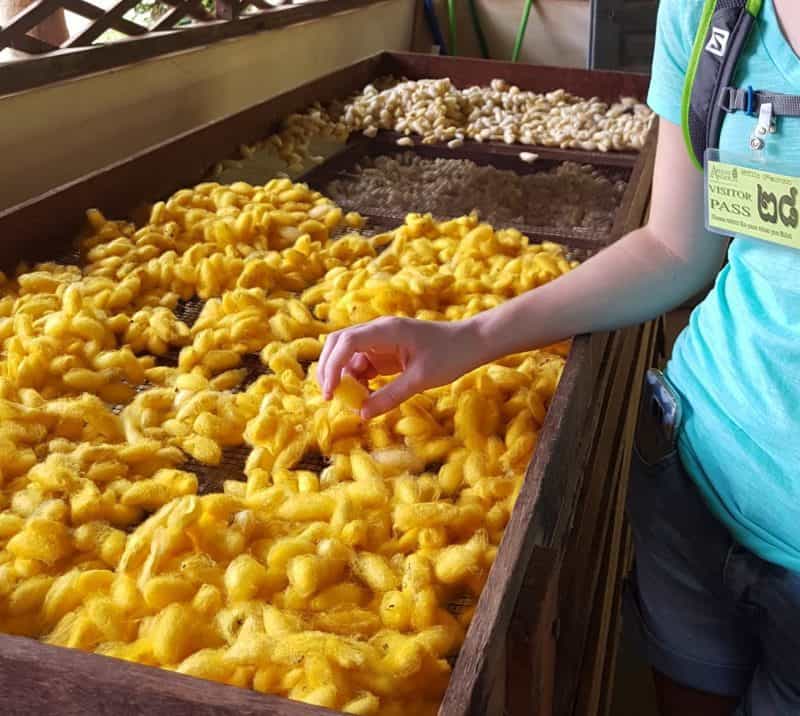
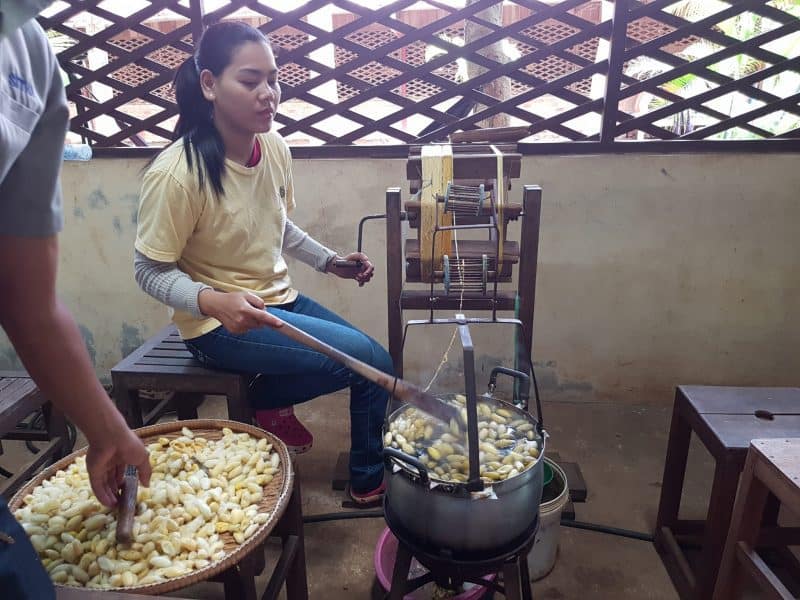
Once the thread is extracted they bleach it, de-gum it and dye it colors that will be used in the fabric. Our guide was showing us all the different plants that they use to create the colors of the silk fabric.

Next comes the weaving process, which is done after 6 months (!!) of training. Each weaver specializes on one particular pattern because it takes so long to learn. They work 8 hours a day with an hour provided for lunch and a nap.
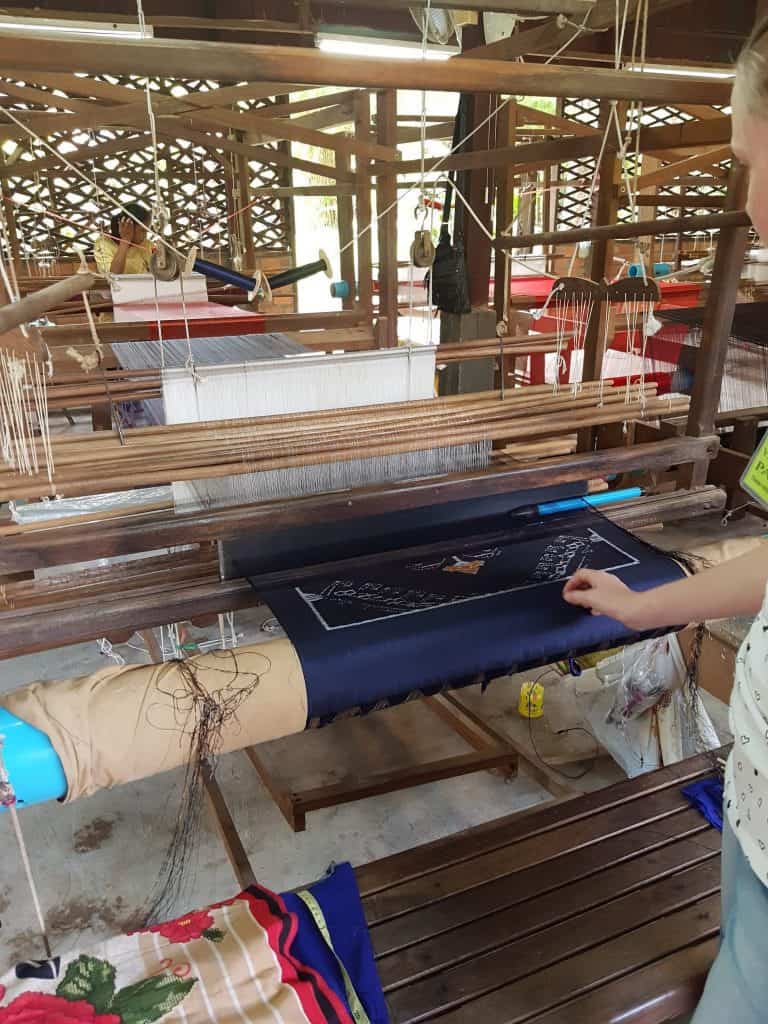
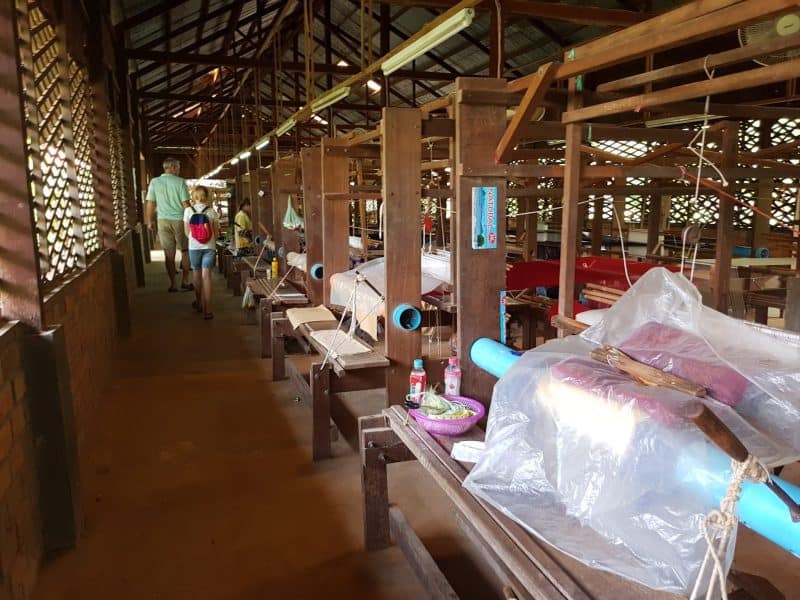
Silk is produced in China, Vietnam, Thailand, and Cambodia. The silk produced by these particular workers at this silk farm is sold in the gift shop that is available at the end of the tour. They do not make enough to export.
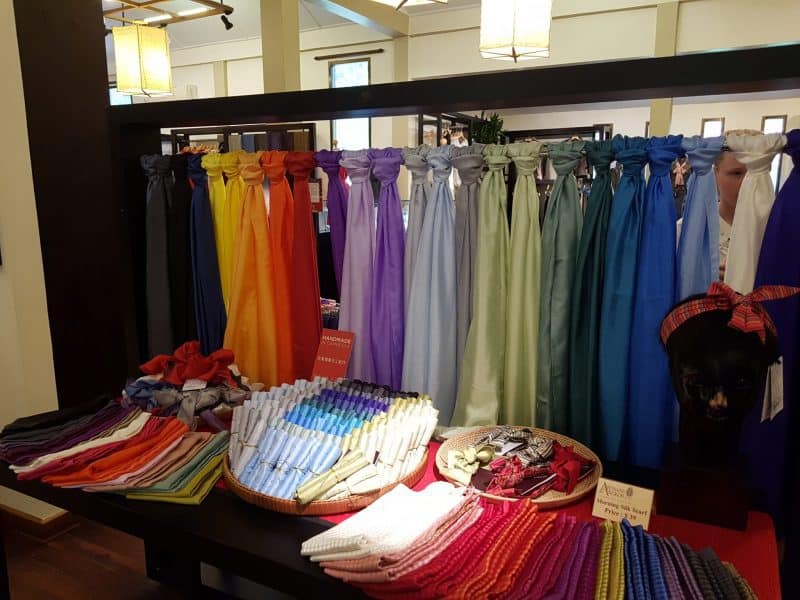
We bought stuff! We never do that. But it was just too cool not to remember with a few treasures. I think it ranked up there with the shoe tour in Elche, Spain, and the Cork Tour in Portugal and the Rope Making Tour in Mexico. We seem to have found a few really cool tours and this was one of them. We bump into our new-found silk knowledge in a lot of places now. A few days later at a night market in Thailand, Haley approached a tourist admiring some “silk” and says “you know that’s not real silk, right?”. The tourist looked a little surprised. We are full of facts and not afraid to share them!
Bye Bye Cambodia
It was a very quick stop, and we would have enjoyed spending more time, including seeing Phenom Penh. But you can’t do it all, so we left Cambodia with a slightly better understanding of the country, but with plans to learn even more someday when we return.
